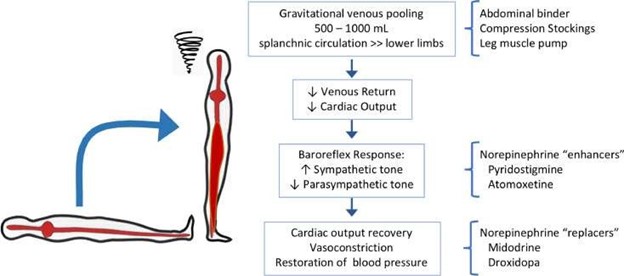A nurse has identified tasks to delegate to a group of assistive personnel (AP) after receiving change-of-shift report.
Identify the sequence of steps the nurse should follow when delegating tasks to the APs.
Monitor progress of task completion with each AP.
Review the skill level and qualifications of each AP.
Evaluate the APs' performance of each task.
Communicate appropriate tasks to the APS with specific expectations
The Correct Answer is B,D,A,C
B. Review the skill level and qualifications of each AP.
Before delegating tasks, the nurse should assess the skill level and qualifications of each AP to ensure they have the necessary knowledge and training to perform the assigned tasks safely and effectively.
D. Communicate appropriate tasks to the APs with specific expectations.
The nurse should clearly communicate the tasks to be delegated to each AP. This includes providing specific instructions, expectations, and any necessary information to ensure the APs understand what is expected of them and can perform the tasks correctly.
A. Monitor progress of task completion with each AP.
Once the tasks are assigned, the nurse should periodically check in with each AP to monitor the progress of task completion. This allows the nurse to provide support, answer questions, and ensure that tasks are being performed as expected.
C. Evaluate the APs' performance of each task.
After the tasks are completed, the nurse should evaluate the APs' performance of each task. This evaluation helps identify any areas for improvement, additional training needs, and overall competency of the APs.
Delegating tasks to assistive personnel is an essential aspect of nursing practice. Following this sequence of steps helps ensure that tasks are delegated appropriately and that the care provided is safe, efficient, and aligned with the APs' capabilities. Regular communication and feedback are essential to effective task delegation and teamwork within the healthcare setting.
Nursing Test Bank
Naxlex Comprehensive Predictor Exams
Related Questions
Correct Answer is A
Explanation
This statement shows respect for the client’s spirituality and offers support without imposing the nurse’s beliefs or values. Spirituality focuses on the significance and purpose of life and can help clients cope with depression and terminal illness.
Choice B is wrong because it implies that the client needs medication to deal with their feelings, which can be dismissive and insensitive.
Antianxiety medication may be appropriate for some clients, but it should not be the first option.
Choice C is wrong because it assumes that the client is ready to discuss advance directives, which may not be the case.
Advance directives are legal documents that specify the client’s wishes for end-of-life care, such as resuscitation, organ donation, or power of attorney.
The nurse should assess the client’s readiness and understanding before initiating this conversation.
Choice D is wrong because it suggests that the client is close to death and needs hospice care, which can be discouraging and frightening. Hospice care is an interdisciplinary team effort that provides palliative care for clients who have a terminal illness and a life expectancy of less than 6 months.
The nurse should explain the benefits of hospice care and obtain the client’s consent before making a referral.
Correct Answer is C
Explanation

Valsartan is a medication that lowers blood pressure by blocking the action of angiotensin II, a hormone that causes blood vessels to constrict. By dilating the blood vessels, valsartan reduces the pressure in the arteries and improves blood flow to the organs. However, if the dose of valsartan is too high, it can cause excessive lowering of blood pressure, which can lead to symptoms such as dizziness, fainting, blurred vision, or nausea. This is especially likely when the client changes position from lying or sitting to standing, which is called orthostatic hypotension. Therefore, the nurse should monitor the client’s blood pressure and pulse in different positions and report any significant changes to the provider. The nurse should also instruct the client to rise slowly from a lying or sitting position and to avoid driving or operating machinery until the effects of the medication wear off.
Choice A is wrong because monitoring the client’s urine output is not a priority action for a client who received an overdose of valsartan.
Valsartan does not have a direct effect on urine output, although it may affect kidney function in some cases. The nurse should monitor the client’s serum creatinine and blood urea nitrogen levels to assess kidney function, but this is not as urgent as evaluating the client for orthostatic hypotension.
Choice B is wrong because checking the client for nasal congestion is not a priority action for a client who received an overdose of valsartan.
Nasal congestion is not a common or serious side effect of valsartan. It is more likely to occur with other types of blood pressure medications, such as angiotensin-converting enzyme (ACE) inhibitors or beta blockers.
Choice D is wrong because obtaining the client’s laboratory results is not a priority action for a client who received an overdose of valsartan.
Laboratory results may provide useful information about the client’s electrolyte levels, kidney function, liver function, or blood counts, but they are not as important as assessing the client’s vital signs and symptoms of hypotension. The nurse should obtain the laboratory results after stabilizing the client’s blood pressure and ensuring adequate perfusion to the organs.
Whether you are a student looking to ace your exams or a practicing nurse seeking to enhance your expertise , our nursing education contents will empower you with the confidence and competence to make a difference in the lives of patients and become a respected leader in the healthcare field.
Visit Naxlex, invest in your future and unlock endless possibilities with our unparalleled nursing education contents today
Report Wrong Answer on the Current Question
Do you disagree with the answer? If yes, what is your expected answer? Explain.
Kindly be descriptive with the issue you are facing.
